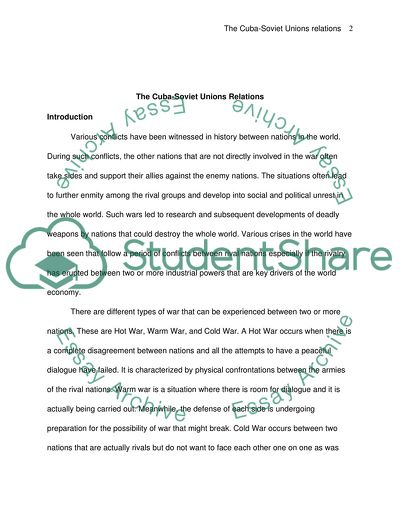Cite this document
(The Cuba-Soviet Unions Relations Coursework Example | Topics and Well Written Essays - 2750 words, n.d.)
The Cuba-Soviet Unions Relations Coursework Example | Topics and Well Written Essays - 2750 words. https://studentshare.org/history/1751917-cuba-and-the-soviet-unions-relationship-during-cold-war-and-how-it-affected-the-us
The Cuba-Soviet Unions Relations Coursework Example | Topics and Well Written Essays - 2750 words. https://studentshare.org/history/1751917-cuba-and-the-soviet-unions-relationship-during-cold-war-and-how-it-affected-the-us
(The Cuba-Soviet Unions Relations Coursework Example | Topics and Well Written Essays - 2750 Words)
The Cuba-Soviet Unions Relations Coursework Example | Topics and Well Written Essays - 2750 Words. https://studentshare.org/history/1751917-cuba-and-the-soviet-unions-relationship-during-cold-war-and-how-it-affected-the-us.
The Cuba-Soviet Unions Relations Coursework Example | Topics and Well Written Essays - 2750 Words. https://studentshare.org/history/1751917-cuba-and-the-soviet-unions-relationship-during-cold-war-and-how-it-affected-the-us.
“The Cuba-Soviet Unions Relations Coursework Example | Topics and Well Written Essays - 2750 Words”. https://studentshare.org/history/1751917-cuba-and-the-soviet-unions-relationship-during-cold-war-and-how-it-affected-the-us.


